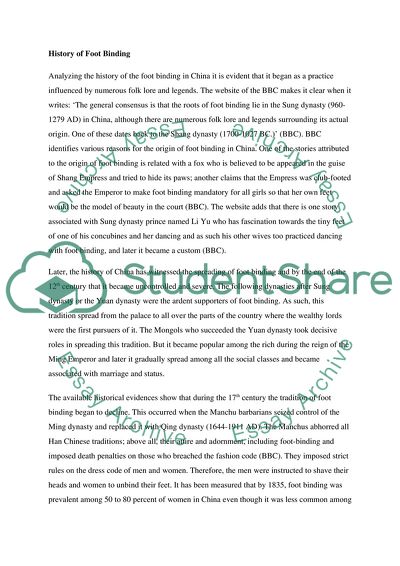Cite this document
(“The Liberation Of Women's Bodies In Modern China Research Paper”, n.d.)
The Liberation Of Women's Bodies In Modern China Research Paper. Retrieved from https://studentshare.org/history/1849739-womens-foot-binding-in-china
The Liberation Of Women's Bodies In Modern China Research Paper. Retrieved from https://studentshare.org/history/1849739-womens-foot-binding-in-china
(The Liberation Of Women'S Bodies In Modern China Research Paper)
The Liberation Of Women'S Bodies In Modern China Research Paper. https://studentshare.org/history/1849739-womens-foot-binding-in-china.
The Liberation Of Women'S Bodies In Modern China Research Paper. https://studentshare.org/history/1849739-womens-foot-binding-in-china.
“The Liberation Of Women'S Bodies In Modern China Research Paper”, n.d. https://studentshare.org/history/1849739-womens-foot-binding-in-china.


